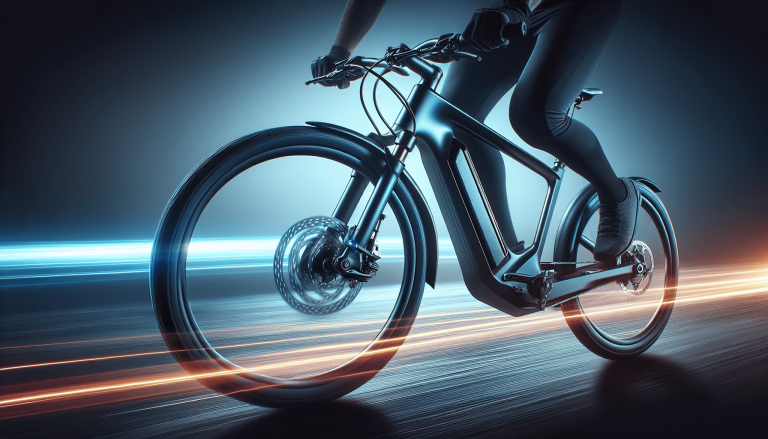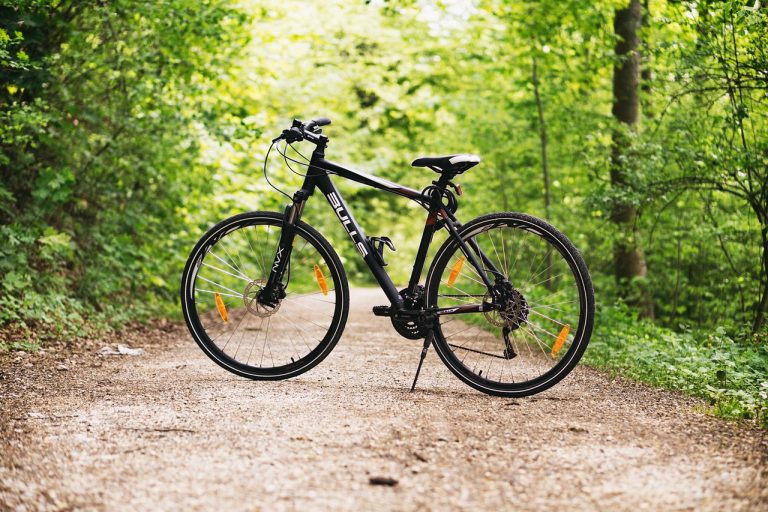Is It Bad To Leave EBike Battery Fully Charged?
Imagine this scenario: you’ve just purchased a brand-new eBike, and you’re thrilled to start riding it for long distances. But soon, a question pops into your mind: is it bad to leave the eBike battery fully charged? In this article, we’ll explore the facts so you can make an informed decision. Let’s put the worry to rest and find out what’s best for your eBike battery.
Effects of Leaving eBike Battery Fully Charged
Leaving your eBike battery fully charged can have several negative effects on its overall performance and lifespan. It is important to understand these effects in order to properly care for your battery and ensure its longevity.
Reduced Battery Lifespan
One of the major consequences of leaving your eBike battery fully charged is a reduced lifespan. Lithium-ion batteries, which are commonly used in eBikes, have a limited number of charge cycles before their capacity starts to degrade. When the battery is kept at maximum charge for extended periods of time, this can accelerate the degradation process and shorten its overall lifespan.
To maximize the lifespan of your eBike battery, it is recommended to keep it at a moderate charge level, ideally between 20% and 80% capacity. This range helps to minimize stress on the battery cells and prolong their longevity.
Increased Risk of Overheating
Leaving your eBike battery fully charged can also increase the risk of overheating. When the battery is at maximum charge, it can generate more heat during use. This excess heat can cause damage to the battery cells and potentially lead to safety hazards.
Overheating can also negatively impact the performance of your eBike. As the battery becomes hotter, it can experience voltage drops and reduced power output. This can result in a decreased range and overall performance of your eBike.
Potential for Chemical Reactions
Another concern when leaving your eBike battery fully charged is the potential for chemical reactions within the battery. If the battery remains at maximum charge for an extended period of time, the components within the battery can react with each other and lead to the formation of unwanted byproducts.
These chemical reactions can degrade the overall performance of the battery and decrease its capacity. They can also lead to increased internal resistance, which can result in reduced power output and performance.
Impact on Overall Performance
Leaving your eBike battery fully charged can also have a direct impact on its overall performance. When the battery is constantly kept at maximum charge, it can experience a phenomenon known as voltage depression. This means that the battery’s voltage drops during use, leading to reduced power output and performance.
In addition, fully charging your battery can result in a decreased range. This is because the battery’s capacity is being constantly utilized while it is at maximum charge, which can lead to a shorter overall range for your eBike.

Understanding Lithium-ion Batteries
In order to properly care for your eBike battery, it is important to understand the composition and characteristics of lithium-ion batteries.
Composition of Lithium-ion Batteries
Lithium-ion batteries are composed of several key components, including a cathode, an anode, and an electrolyte. The cathode is typically made of lithium cobalt oxide, while the anode is made of graphite. The electrolyte, which allows the movement of lithium ions between the cathode and the anode, is commonly a liquid or gel polymer.
These components work together to store and release energy during the charging and discharging process. Understanding how these components interact is crucial in order to properly care for your eBike battery.
Charging Process and Characteristics
When charging a lithium-ion battery, a chemical reaction occurs that allows lithium ions to move from the cathode to the anode. This process reverses when the battery is discharged, with the lithium ions moving from the anode back to the cathode.
Lithium-ion batteries have the advantage of being able to hold a high charge density, meaning they can store a significant amount of energy in a relatively compact size. However, they are also sensitive to factors such as temperature and overcharging, which can have a detrimental effect on their performance and lifespan.
Ideal Charge Levels
To maximize the lifespan of your eBike battery, it is recommended to charge it to a moderate level, ideally between 20% and 80% capacity. This allows the battery to maintain a healthy balance between capacity and stress levels, prolonging its overall lifespan.
Charging the battery to 100% capacity should be done sparingly and only when necessary. Constantly leaving the battery at maximum charge can lead to the negative effects mentioned earlier, including reduced lifespan, increased risk of overheating, potential chemical reactions, and impact on overall performance.

Optimal Charging Practices
To ensure the health and longevity of your eBike battery, it is important to follow optimal charging practices. These practices will help minimize stress on the battery cells and maximize its overall performance.
Avoid Continuous Charging
One of the key recommendations for charging your eBike battery is to avoid continuous charging. Keeping the battery on the charger for extended periods of time, such as overnight or for several days, can contribute to accelerated degradation of the battery cells.
Instead, it is recommended to charge your eBike battery to the desired capacity and then remove it from the charger. This will help prevent overcharging and ensure that the battery remains at a moderate charge level.
Follow Manufacturer’s Guidelines
Every eBike battery is different, and it is important to follow the manufacturer’s guidelines for optimal charging practices. The manufacturer will provide specific recommendations on charge levels, charging times, and any additional considerations for your particular battery model.
By following the manufacturer’s guidelines, you can ensure that you are treating your eBike battery properly and maximizing its lifespan.
Use Smart Chargers
Using a smart charger can also help optimize the charging process for your eBike battery. Smart chargers are designed to monitor and control the charging process, ensuring that the battery is charged to the desired capacity without overcharging.
These chargers often have features such as automatic shut-off or trickle charging, which can help maintain the battery at a moderate charge level and prevent overcharging.
Charge to Moderate Levels
As mentioned earlier, it is best to charge your eBike battery to a moderate level, ideally between 20% and 80% capacity. This allows the battery to function at its optimal performance while minimizing stress on the battery cells.
Charging the battery to 100% capacity should be done sparingly and only when necessary, as constantly leaving the battery at maximum charge can have negative effects on its overall lifespan and performance.

Guidelines for Storing Fully Charged Batteries
If you need to store your eBike battery for an extended period of time, it is important to follow specific guidelines to ensure its health and longevity.
Consider Temperature and Location
When storing your fully charged eBike battery, it is important to consider the temperature and location. Extreme temperatures, such as extreme heat or cold, can have a negative effect on the battery’s performance and lifespan.
Ideally, the battery should be stored in a cool, dry place. Avoid exposing the battery to direct sunlight or placing it in freezing temperatures. Temperature fluctuations can also be harmful to the battery, so try to store it in a location with a consistent temperature.
Frequent Usage vs Storage
If you use your eBike regularly, it is generally recommended to keep the battery at a moderate charge level and avoid fully charging it unless necessary. This allows the battery to maintain its health and performance while ensuring you have enough power for your rides.
However, if you plan to store your eBike battery for an extended period of time without regular usage, it is recommended to charge it to around 80% capacity before storage. This helps to balance the battery’s health and capacity while minimizing the risk of overcharging.
Ideal Charge Levels for Storage
When storing your eBike battery, the ideal charge level is around 80%. This allows the battery to maintain a healthy state without being fully charged, which can contribute to accelerated degradation.
It is also recommended to periodically check the battery’s charge level during storage, especially if the storage period is prolonged. This will help prevent the battery from fully discharging, which can also be detrimental to its overall health.

Other Factors Affecting Battery Lifespan
While proper charging and storage practices play a crucial role in maintaining the health and longevity of your eBike battery, there are other factors that can also impact its lifespan.
Temperature and Climate
Temperature and climate have a significant impact on the performance and lifespan of lithium-ion batteries. Extreme temperatures, both hot and cold, can affect the battery’s capacity and overall performance.
Hot temperatures can lead to increased internal resistance and the potential for overheating, while cold temperatures can decrease the battery’s capacity and ability to deliver power. It is important to avoid exposing your eBike battery to extreme temperatures and store it in a cool, dry place whenever possible.
Regular Maintenance
Regular maintenance is also important for prolonging the lifespan of your eBike battery. This includes charging practices, as discussed earlier, but also involves other aspects such as cleaning and inspecting the battery regularly.
Keeping the battery clean and free from dirt, debris, and moisture can help prevent damage and ensure proper functioning. Inspecting the battery for any signs of wear or damage, such as cracks or bulging, is also important for identifying any potential issues early on.
Avoiding Extreme Discharges
Avoiding extreme discharges is another key factor in maintaining the health of your eBike battery. Allowing the battery to fully discharge on a regular basis can contribute to accelerated degradation and reduce its overall lifespan.
Instead, it is recommended to recharge the battery before it reaches a low capacity, ideally around 20% to 30%. This helps to minimize stress on the battery cells and maintain a healthy charge level.

Balancing Battery Health and Practicality
Caring for your eBike battery involves finding a balance between convenience and battery care. While there are optimal charging and storage practices, it is also important to consider the practicality of using your eBike regularly.
Finding a Balance between Convenience and Battery Care
It is understandable that you may want to fully charge your eBike battery for a long ride or a day of extensive use. However, it is important to find a balance between convenience and battery care.
If possible, try to plan your rides and usage in a way that allows you to keep the battery at a moderate charge level most of the time. This will help maintain its health and longevity while still providing you with enough power for your needs.
Longevity vs Regular Usage
When it comes to eBike battery care, it is important to consider your usage patterns and prioritize either battery longevity or regular usage.
If you primarily use your eBike for occasional rides or shorter distances, focusing on battery longevity may be the best approach. This means following optimal charging and storage practices to ensure the battery remains healthy and performs well over an extended period of time.
On the other hand, if you rely heavily on your eBike for daily commutes or longer rides, it may be more practical to prioritize regular usage. This may involve fully charging the battery when needed but still following guidelines for optimal charging and storage when possible.
Impact on Range
Lastly, it’s important to note that the condition and charge level of your eBike battery can directly impact its range. A battery that is properly maintained and charged to a moderate level will generally provide a longer range compared to a battery that is constantly fully charged or poorly maintained.
By following the recommended charging practices and taking care of your eBike battery, you can ensure that it performs optimally and provides you with the range you need for your rides.
In conclusion, leaving your eBike battery fully charged can have negative effects on its performance and lifespan. It is important to understand the composition and characteristics of lithium-ion batteries, as well as follow optimal charging and storage practices, to ensure the health and longevity of your eBike battery. By finding a balance between convenience and battery care, and considering other factors such as temperature and regular maintenance, you can maximize the lifespan and performance of your eBike battery.






